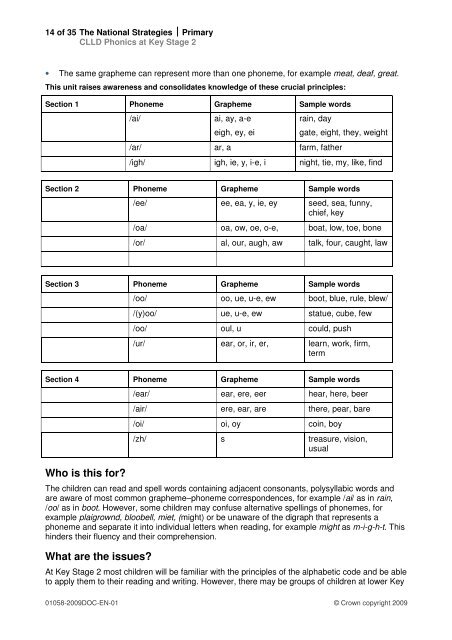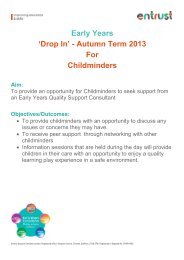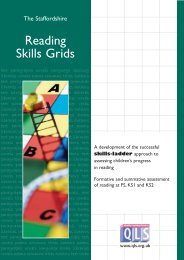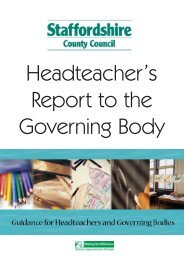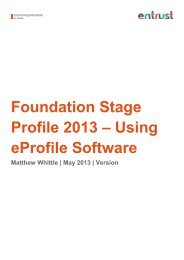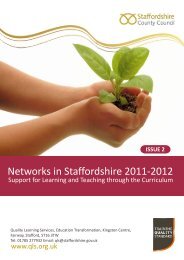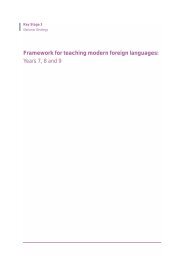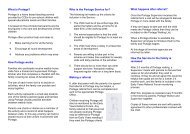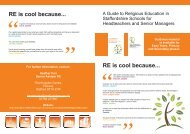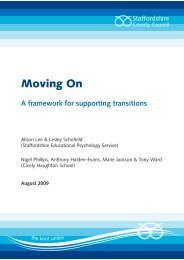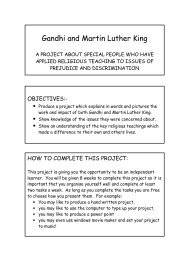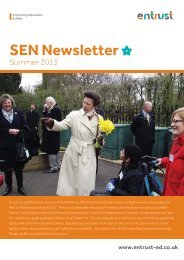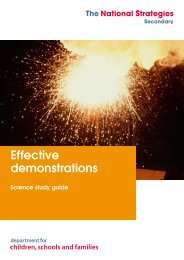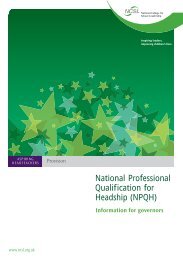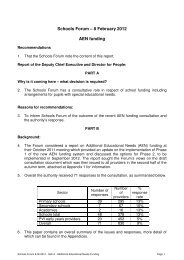CLLD Phonics at Key Stage 2 - School-Portal.co.uk
CLLD Phonics at Key Stage 2 - School-Portal.co.uk
CLLD Phonics at Key Stage 2 - School-Portal.co.uk
Create successful ePaper yourself
Turn your PDF publications into a flip-book with our unique Google optimized e-Paper software.
14 of 35 The N<strong>at</strong>ional Str<strong>at</strong>egies ⏐ Primary<br />
<strong>CLLD</strong> <strong>Phonics</strong> <strong>at</strong> <strong>Key</strong> <strong>Stage</strong> 2<br />
• The same grapheme can represent more than one phoneme, for example me<strong>at</strong>, deaf, gre<strong>at</strong>.<br />
This unit raises awareness and <strong>co</strong>nsolid<strong>at</strong>es knowledge of these crucial principles:<br />
Section 1 Phoneme Grapheme Sample words<br />
/ai/ ai, ay, a-e<br />
eigh, ey, ei<br />
rain, day<br />
/ar/ ar, a farm, f<strong>at</strong>her<br />
g<strong>at</strong>e, eight, they, weight<br />
/igh/ igh, ie, y, i-e, i night, tie, my, like, find<br />
Section 2 Phoneme Grapheme Sample words<br />
/ee/ ee, ea, y, ie, ey seed, sea, funny,<br />
chief, key<br />
/oa/ oa, ow, oe, o-e, bo<strong>at</strong>, low, toe, bone<br />
/or/ al, our, augh, aw talk, four, caught, law<br />
Section 3 Phoneme Grapheme Sample words<br />
/oo/ oo, ue, u-e, ew boot, blue, rule, blew/<br />
/(y)oo/ ue, u-e, ew st<strong>at</strong>ue, cube, few<br />
/oo/ oul, u <strong>co</strong>uld, push<br />
/ur/ ear, or, ir, er, learn, work, firm,<br />
term<br />
Section 4 Phoneme Grapheme Sample words<br />
Who is this for?<br />
/ear/ ear, ere, eer hear, here, beer<br />
/air/ ere, ear, are there, pear, bare<br />
/oi/ oi, oy <strong>co</strong>in, boy<br />
/zh/ s treasure, vision,<br />
usual<br />
The children can read and spell words <strong>co</strong>ntaining adjacent <strong>co</strong>nsonants, polysyllabic words and<br />
are aware of most <strong>co</strong>mmon grapheme–phoneme <strong>co</strong>rrespondences, for example /ai/ as in rain,<br />
/oo/ as in boot. However, some children may <strong>co</strong>nfuse altern<strong>at</strong>ive spellings of phonemes, for<br />
example plaigrownd, bloobell, miet, (might) or be unaware of the digraph th<strong>at</strong> represents a<br />
phoneme and separ<strong>at</strong>e it into individual letters when reading, for example might as m-i-g-h-t. This<br />
hinders their fluency and their <strong>co</strong>mprehension.<br />
Wh<strong>at</strong> are the issues?<br />
At <strong>Key</strong> <strong>Stage</strong> 2 most children will be familiar with the principles of the alphabetic <strong>co</strong>de and be able<br />
to apply them to their reading and writing. However, there may be groups of children <strong>at</strong> lower <strong>Key</strong><br />
01058-2009DOC-EN-01 © Crown <strong>co</strong>pyright 2009


